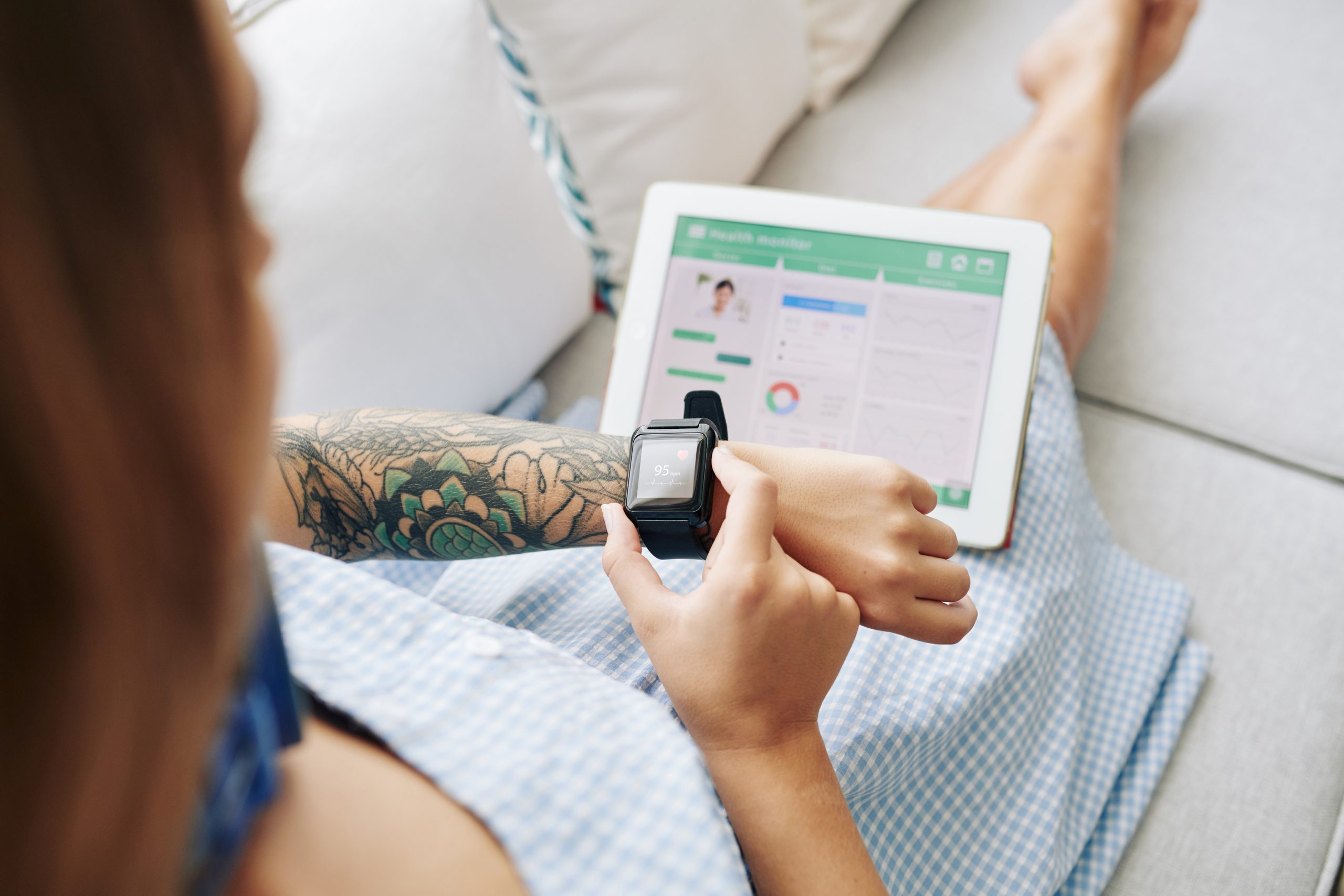
The Internet of Medical Things (IoMT) technology has opened endless opportunities in the home healthcare industry. This space has seen rapid growth in the past decade, with consumers taking more interest now than ever in understanding, maintaining, and improving their health and wellbeing. The outbreak and response to COVID-19 generated an outpouring of demand for telemedicine and telediagnostic solutions for simpler, faster, lower-risk medical treatment. Wearable IoMT Biosensing Lifestyle Devices now allow critical biometric data to be collected in real-time, even outside medical facilities. Networked with smartphone and cloud-based apps, these physiological and bio-sensing smart devices continuously measure and record essential metrics and essential contextual information, all of which are then made easily accessible to users and medical providers.
Wearable IoMT Biosensing Lifestyle Devices have proven to be of great value as a class, and their prevalence continues to grow, with many developers now looking to commercialize wearables of their own. Yet, due to their unique components and related intricacies, actually doing so may prove more complicated than with your average medical product. Achieving success requires a clear understanding of these devices, their intended uses, and the processes necessary to make them both safe and maximally beneficial to users.
Wearable IoMT devices are a massive step forward in the effort to provide high-quality, highly personalized care to every patient, offering the freedom to manage chronic illnesses and monitor conditions without being chained to a healthcare facility.
The First Type: Biosensory Devices
Biosensory devices collect physiological samples from the human body to be analyzed in real-time. While alleviating some of the stress of managing health for patients, they also allow providers to administer preventative care in a much shorter period than previously possible.
A biosensory device consists of two major parts: a transducer and a biological element, or bio-element. For the device to operate, the bio-element must first interact with an analyte it has collected. This results in a biological reaction, which is then converted into an electrical signal via the transducer.
The previous blog (part 2 of 5) detailed an overview of Wearable IoMT Biosensory Devices, their applications, and challenges yielding development innovations.
The Second Type: Physiological Sensor Devices
These devices differ from biosensory devices in that they do not utilize a biological body sample but instead measure the user’s physiological parameters with non-invasive body sensors that collect vital signs continuously. This category of devices, like biosensory devices, can provide for disease monitoring, prevention, and treatment.
Top Challenge in Designing for these Devices
While there are several challenges, one prevalent challenge is ensuring proper contact between the physiological sensor embedded in the device and the subject’s body. To achieve success for the patient, a wearable device must encourage appropriate use/compliance through direct contact with the body without inducing discomfort to the wearer. Maintaining intimate yet comfortable contact with the targeted zone of the body is imperative for continued use and accuracy. Compliance can be realized through lifestyle HFE optimization. Advanced materials and intelligent ergonometric design provide the necessary scalability (human form) and flexibility for lifestyle motion.
Additional Challenges and how MIDI addresses them
The greatest challenges provide additional opportunity to innovate and create intellectual property for our clients via unique designs and engineering solutions. In addition to the most prominent challenge of sensor contact, the following unique challenges are present.
In devices that are in a “steady on” state, power is essential. The challenge of maximizing up-time yet minimizing battery size requires strategy in four primary areas:
These devices can be used in any number of recreational or personal settings and must withstand the environment they are placed in. High IP ratings for environmental factors such as dust, pressure, liquid, condensation, submersion, and solids are imperative for efficiency and longevity.
When gathering and storing personal physiological data, the challenge of data security and privacy is of high importance. Devices must be designed to protect the user’s data.
Application Examples
Intensive care is one of the most challenging and stressful health services, where a doctor or a team of doctors need to make critical decisions quickly. These decisions often have to be made when the critical physiological parameters are taken intermittently (“spot checks”) and sometimes not at all (i.e., nurse compliance). In such situations, wearable sensors that facilitate the continuous measurement of vital signs can provide an early indication of deterioration, lowering risks of complications and potentially help patients recover faster. Similar applications such as post-operative out-patient applications will equally benefit from a remote, continuous physiological measurement approach.
The COVID-19 pandemic has created a need to harness and leverage our digital infrastructure for remote patient monitoring. The translation of such technology toward predicting the incidence of COVID-19 remains a necessity. When used with predictive platforms, users of IoMT wearable devices can be alerted when changes in their metrics match those associated with COVID-19.
The growing field of bioelectronic medicine has demonstrated that the human body is a bio-circuit such that induced neuromodulation via electrical stimulus at appropriate locations on the body can generate a prescribed reaction to achieve a clinical outcome.
When applicable, a “closed-loop” system that automatically adapts to a patient’s clinical state can enhance the efficacy of a therapy. For example, observing directly how the brain reacts (EEG) to stimulation in real-time with the utilization of an algorithm and stimulation refinement provides physiological state optimization.
In our next entry of this series, we will explore applying MIDI’s Innovation Roadmap™ to address Wearable IoMT Challenges yielding innovation and competitive differentiation. We will demonstrate how to commercialize these devices utilizing the roadmap steps from our DevelopmentDNA™ approach.
We do not share your information with third parties